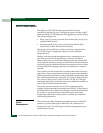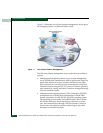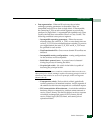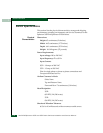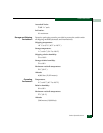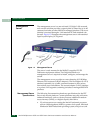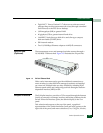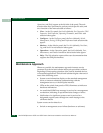
1
Switch Description
1-9
General Information
• Port segmentation - When an ISL activates, the switches
exchange operating parameters to determine if they are
compatible and can join to form a single fabric. If incompatible,
the connecting E_Port at each switch segments to prevent the
creation of a single fabric. A segmented link transmits only Class
F traffic; the link does not transmit Class 2 or Class 3 traffic. The
following conditions cause ports to segment:
— Incompatible operating parameters - Either the resource
allocation time-out value (R_A_TOV) or error-detect time-out
value (E_D_TOV) is inconsistent between switches. To prevent
port segmentation, the same E_D_TOV and R_A_TOV must
be specified for each switch.
— Duplicate domain IDs - One or more domain ID conflicts are
detected.
— Incompatible zoning configurations - zoning configurations
for the switches are not compatible.
— Build fabric protocol error - A protocol error is detected
during the process of forming the fabric.
— No principal switch - No switch in the fabric is capable of
becoming the principal switch.
NOTE: At least one director or switch in a multiswitch fabric must be set to
either principal or default, making it capable of becoming principal switch. If
all directors and switches are set to never principal, all ISLs will segment
(Reason code 05).
— Unresponsive switch - Each switch in a fabric periodically
verifies operation of all attached switches. An ISL segments if
the attached switch does not respond to a verification request.
— ELP retransmission failure timeout - A switch that exhibits a
hardware failure or connectivity problem cannot transmit or
receive Class F frames. The director did not receive a response
to multiple exchange link protocol (ELP) frames, did not
receive a fabric login (FLOGI) frame, and cannot join an
operational fabric.




